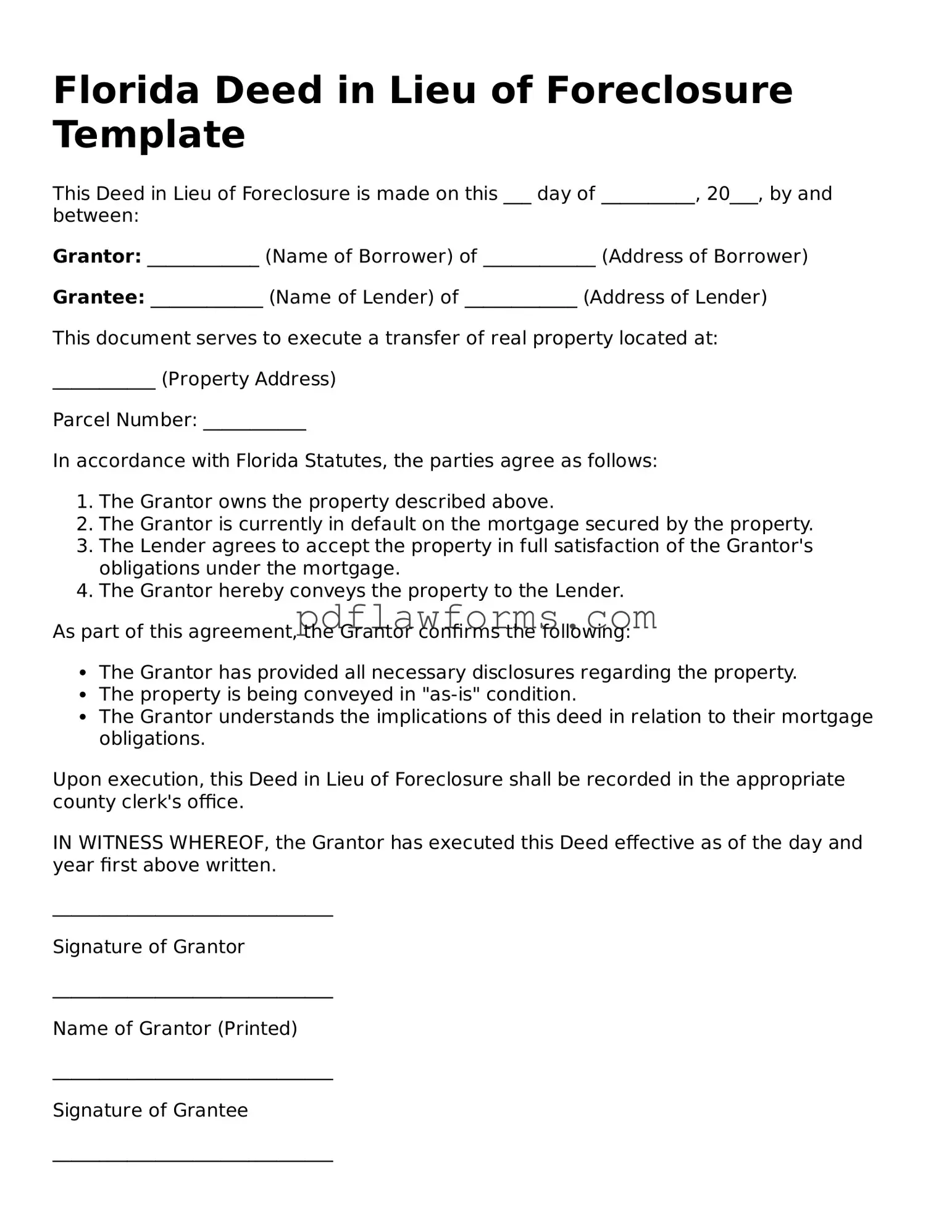When homeowners face the daunting prospect of foreclosure, a Deed in Lieu of Foreclosure can sometimes offer a viable alternative. However, filling out this form is not as straightforward as it may seem. Many people make mistakes that can complicate the process or even render the deed ineffective. Here are nine common pitfalls to avoid.
First, one of the most frequent errors is failing to understand the terms of the deed itself. A Deed in Lieu of Foreclosure transfers ownership of the property back to the lender, but it also comes with specific obligations. Homeowners often overlook the implications of this transfer, including potential tax consequences. Understanding these terms is crucial before signing any documents.
Another common mistake is not including all necessary parties in the deed. If the property is jointly owned, all owners must sign the document. Omitting a co-owner can lead to legal complications later on. Ensuring that every individual with an interest in the property is accounted for is essential to avoid future disputes.
Some homeowners also neglect to provide accurate property descriptions. The deed must include a clear and precise description of the property being transferred. Inaccuracies can cause confusion and may delay the process. It's important to double-check this information against official records to ensure it is correct.
Additionally, many individuals fail to seek legal advice before completing the deed. While it may seem like a straightforward process, the implications of a Deed in Lieu of Foreclosure can be significant. Consulting with a legal professional can help clarify any uncertainties and ensure that the homeowner's rights are protected.
In some cases, homeowners do not fully disclose all liens or encumbrances on the property. The lender needs to be aware of any existing debts associated with the property. Failing to disclose this information can lead to complications and may even result in the lender refusing the deed.
Another mistake involves overlooking the importance of notarization. Many people assume that simply signing the document is enough. However, a notary public must witness the signing for the deed to be legally binding. Skipping this step can invalidate the entire process.
Homeowners may also forget to retain copies of the completed deed and any related correspondence. Keeping thorough records is vital, as it provides proof of the transaction and can be useful if disputes arise later. Documenting every step of the process helps ensure clarity and accountability.
Moreover, some individuals rush through the process without fully understanding the lender's requirements. Each lender may have different criteria for accepting a Deed in Lieu of Foreclosure. Homeowners should take the time to review these requirements carefully to avoid unnecessary delays or rejections.
Finally, failing to communicate effectively with the lender can lead to misunderstandings. Clear and open communication is key throughout the process. Homeowners should ensure they understand the lender’s expectations and keep them informed of any changes in their situation.
By being aware of these common mistakes, homeowners can navigate the Deed in Lieu of Foreclosure process more effectively. Taking the time to understand the requirements and implications can lead to a smoother transition and a better outcome.
